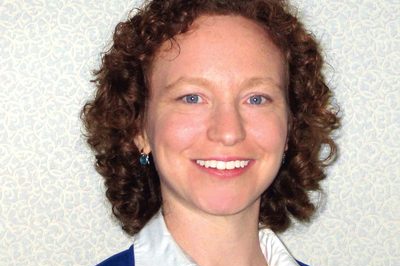My third-grade son has been enjoying biographies, learning things even I didn’t know about Thomas Edison and Benjamin Franklin. So when I read that Frank Kameny, one of the founding fathers of the gay-equality movement, was honored Nov. 15 by a memorial service at the Cannon House Office Building near the U.S. Capitol, I had to wonder: Why are there almost no elementary- and middle-school-grade biographies of prominent LGBT people that show them as LGBT people?
The fact is, children’s books about real LGBT people and LGBT civil-rights events are even scarcer than children’s LGBT-inclusive fiction books. “The Harvey Milk Story,” by Kari Krakow (Two Lives, 2002), is the only picture-book biography of an LGBT person in which the person is openly LGBT.
I’ve also found two middle-grade biographies of Ellen DeGeneres, by Sherry Beck Paprocki (Chelsea House, 2009) and Katie Sharp (Lucent Books, 2010), which describe her coming out and how it impacted her life.
But that’s about it until we reach high-school-level material.
Even historical fiction is rare, excepting the brand-new picture book “Operation Marriage,” by Cynthia Chin-Lee (Reach and Teach, 2011), about a lesbian-headed family in California before and after the Proposition 8 vote that banned marriage for same-sex couples. The book shows the impact of such debates on local communities, and that children are indeed sensitive to the special status of marriage — even though it at times seems to conflate people’s objections to unmarried parents and their objections to same-sex parents.
We need more elementary- and middle school-appropriate biographies and histories that show LGBT people as LGBT — books about the key figures in the struggle for LGBT equality and about LGBT people whose contributions lie in other areas.
Why? Because children deserve to know about all of the major civil-rights movements of our time. They deserve to learn, when relevant, if and how people’s significant relationships and struggles against inequality impacted their lives, no matter what the reason for their fame. And for young people who are LGBT or questioning, or who have LGBT parents, it is important to see LGBT people achieving in many areas of life.
In schools, LGBT-inclusive materials not only expand students’ knowledge, but also help create a safe and welcoming environment. According to the 2009 National School Climate Survey from the Gay, Lesbian and Straight Education Network, LGBT students in schools with inclusive curricula were less likely to report hearing homophobic remarks or negative comments about gender expression, and less likely to feel unsafe or experience victimization because of their sexual orientation and gender expression.
Histories, biographies and historical fiction about LGBT people will make it easier for schools to build this kind of inclusive curriculum. In California, a new law even requires schools to incorporate the contributions of openly LGBT people into history lessons.
But schools are “scrambling” to figure out how to do this, according to an article in the San Diego LGBT Weekly (Oct. 21). The piece quotes Paul Boneberg, executive director at the GLBT Historical Society in San Francisco, who said, “I’m not sure how we plug it into the curriculum at the grade-school level, if it all.”
Part of the problem, the article says, is the vagueness of the legislation; part is that there are no funds for new instructional material or textbooks. But I have to think another part is that there are almost no existing resources. And if they’re having problems in California, where LGBT inclusion is required, how much more difficult will it be in other states? Even if schools or teachers want to offer inclusive materials, there are none to be found.
The hurdles are high, though. LGBT-inclusive fiction books are among those most banned and challenged in schools and public libraries. Nonfiction would likely fare no better. Still, that is no excuse not to try. Not every challenge attempt is successful.
Another hurdle is that it is hard to write accurate, well-researched history that is also engaging and accessible, especially in a length suitable for younger children. But I find it hard to believe we don’t have the talent among the LGBT community and our allies.
The question is whether publishers will step up — not only small, independent presses, but also publishing behemoths like Scholastic, which have the clout and distribution needed to get the books into schools and libraries. (Scholastic has published LGBT-inclusive fiction books before, like Arthur Levine’s picture book “Monday Is One Day.”)
There are small efforts underway. The Anti-Defamation League, GLSEN and StoryCorps have recently created “Unheard Voices,” an oral history and curriculum project for middle- and high-school students (adl.org). The project contains online audio interviews (and transcripts) of nine people who “helped shape LGBT history,” along with discussion questions and historical background. It is a good start.
“History is written by the victors,” goes an old saying. We may not have won full LGBT equality yet, but we have had many wins along the way. It is time that we start to write LGBT history — for all ages — and pass on some of those victories to the next generation.
Dana Rudolph is the founder and publisher of Mombian (www.mombian.com), a blog and resource directory for LGBT parents.
